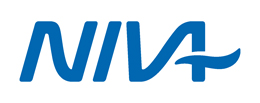Visible waveband radiance and irradiance measurements in the water column
Type of resources
Topics
INSPIRE themes
Keywords
Contact for the resource
Provided by
Formats
Representation types
Scale
-

POSEIDON is an operational marine monitoring, forecasting and information system for the GreekSeas. The observing component is a distributed infrastructure made by three coastal buoys (Saronikos buoy-SB, Heraklion Coastal Buoy-HCB and Athos buoy-AB) and one Ferrybox (PFB). A calibration laboratory) is supporting the observing activities. The Ferrybox is installed on board H/S/F “Knossos Palace” and is equipped with sensors measuring T, C/S, DO, pH, fluorescence and turbidity. It is the only Ferry Box in the Mediterranean operating daily along the route Heraklion – Piraeus.
-

NorFerry is composed of three FerryBoxes that are operating in the North Sea, coastal Norway, and the Barents Sea opening. The Ferrybox installation provide the core sensor data from about 4 meters depth of temperature, salinity, Chl-a fluorescence, oxygen and turbidity. Some ships will also provide data on parameters, ocean colour and true wind. Special sampling can be ordered.
-

The NorFerry infrastructure started back in 2001 and covers a network of 5 Ferrybox-systems in the Baltic, North Sea, Atlantic Sea and Arctic areas. Two of them are offered to TNA. FA is installed on a ferry. The system has the core sensor with thermosalinograph, inlet temperature sensor, oxygen, Chl-a fluorescence, turbidity and system for water sampling. FA has also the additional fluorescence sensor of PAH, Pycocyanin and cDOM and passive sampling unit for contaminants. FA has spectrophotometric pH and a membrane based solid state detector pCO2 system, and radiometers for marine reflectance of the sea surface. Data are transferred daily via internet communication to a NIVA database as part of the CMEMS. The infrastructure is used for physical, pelagic biodiversity, chemical (contaminants) and biogeochemical (marine acidification) studies.
-

The PROSOPE (PROductivity of Oceanic PElagic Systems) cruise took place from the 4th of September (Agadir, Morocco) to the 4th of October (Toulon, France) 1999 aboard the RV Thalassa. There were four main scientific objectives: - To carry out classical process studies, typical of JGOFS. - To focus on small scale biogeochemical processes, in particular at a daily scale. - To study the influence of nitrogen, phosphorus and iron on oceanic fertility. - To conduct a calibration/validation operation for the SeaWIFS color sensor.
 Metadata catalogue
Metadata catalogue